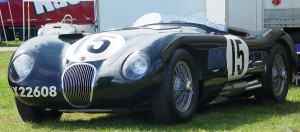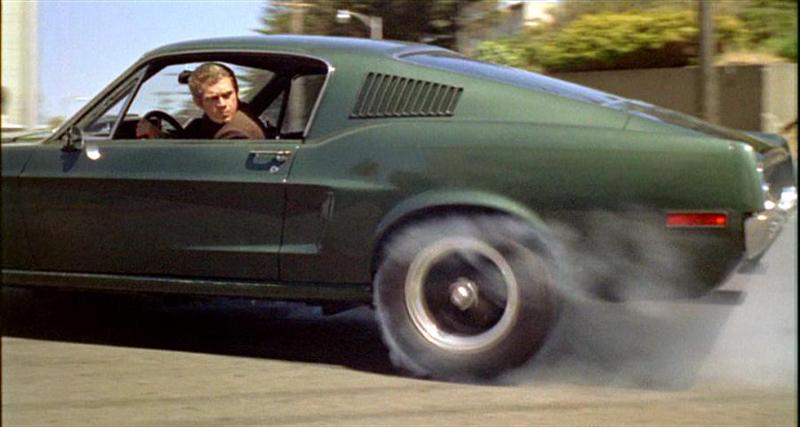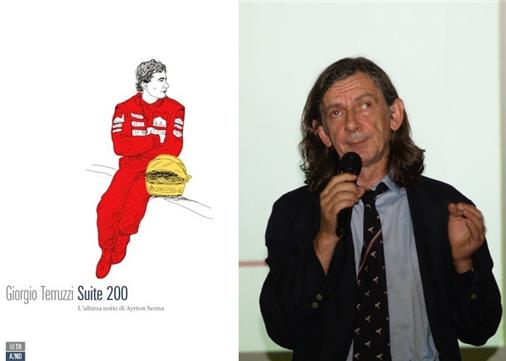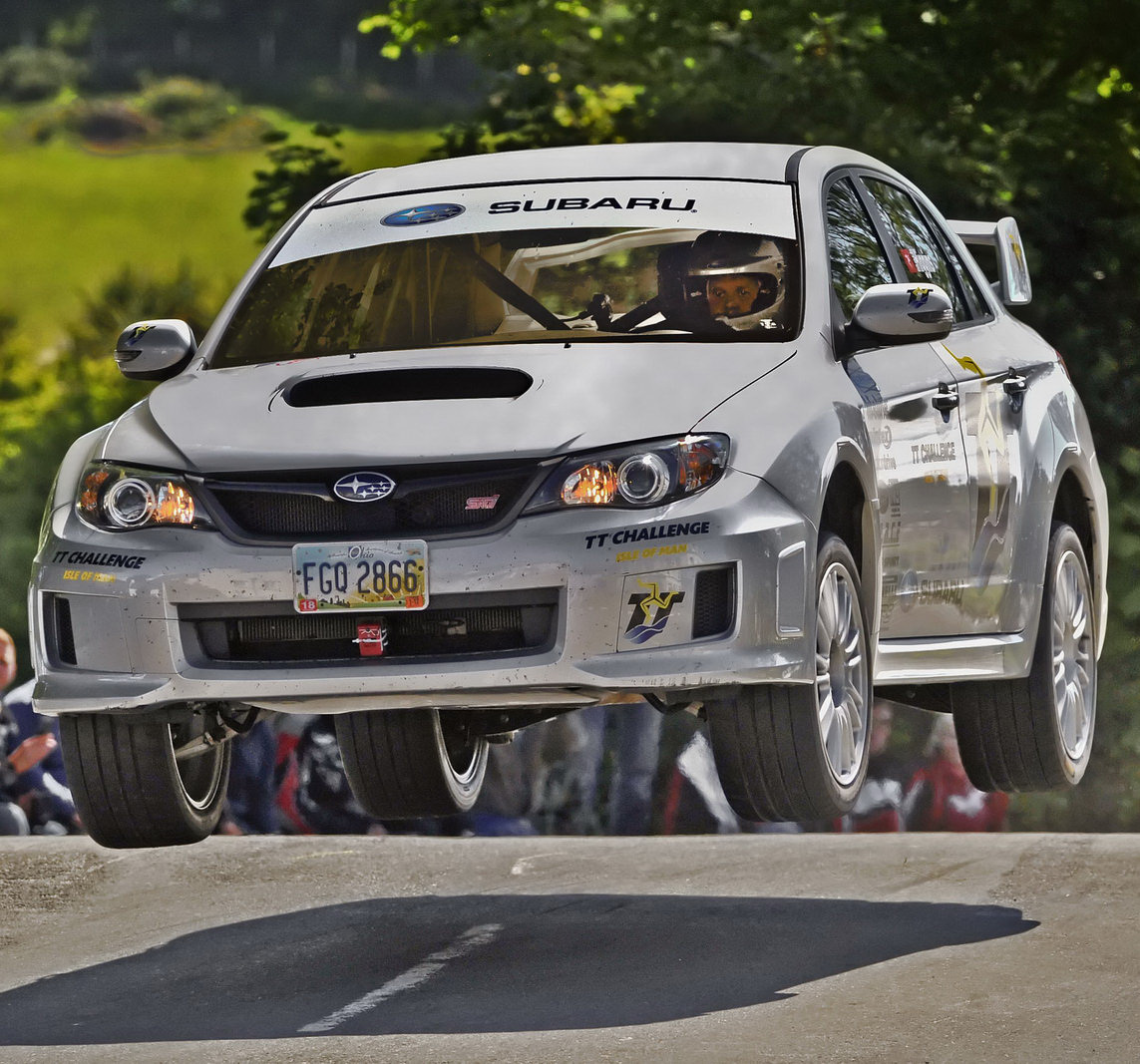This article is one of a series written about cars in the Blackhawk Museum, as part of the Docent training scheme I have completed.
 The Jaguar C-Type was Jaguar’s first purpose built racing car. It’s first race was the arduous French endurance classic, the Le Mans 24 hours; it won. It went on to win the next two races it was entered for. By the time it was retired from active competition, Jaguar’s place amongst the Great Marques was established.
The Jaguar C-Type was Jaguar’s first purpose built racing car. It’s first race was the arduous French endurance classic, the Le Mans 24 hours; it won. It went on to win the next two races it was entered for. By the time it was retired from active competition, Jaguar’s place amongst the Great Marques was established.
William Lyons, Jaguar’s founder, established a successful company making attractive motorcycle sidecar bodies in the early 20s; by the mid-thirties, Swallow Sidecars had been abbreviated to SS, and the Jaguar name had begun to appear on stylish touring and sports cars. As Britain sought to rebuild after the war, SS had come to have an altogether more unpleasant connotation to most people, and thus Lyons dropped it, his company becoming simply Jaguar in 1945.
In 1950, Jaguar entered its new road car, the XK120 in the Le Mans 24hour. This was nothing more than a toe in the water, to see how the car performed. The team showed very well, being able to lap consistently within 5mph of the winning Lago Talbot, which was nothing more than a Formula 1 car with cycle wings, lights and a two seater body. William Lyons was present, and it may have been this startling success which encouraged him to agree to the building of the C-type – a proper light weight racing car wrapped around the XK120 engine.
This 3.4 liter double overhead cam straight six was similar to the engines found under the bonnets of road going Jaguars right up into the eighties. Contemporary C-type road tests praised the flexibility of the engine, it being tractable around town, but showing its true racing colors above 3000rpm. Where the C-type differed from the XK120 was in its construction, which was of a tubular space-frame design, and its beautiful aerodynamic body. All told, around thirty percent of the car’s total body weight was saved, making it more willing to start, stop and corner. The body’s shape was the work of Malcolm Sayer, an aerodynamicist with an aeronautical background. The XK120 was so-named due to it’s claimed top speed; with special modifications such as aero screens and a belly pan, and perhaps a little under-bonnet tweaking, one managed as much as 132mph. In contrast, right from the outset, the C-type was a 140mph+ car, some configurations managing more than 150mph. While testing the car, The Motor commented that above 130mph, there was “a curious sense of becoming faintly airborne”, which must have held drivers attention on the fast sweeping curves of Le Mans !
Into 1952, Jaguar began work with Dunlop and Girling to develop disc brakes. As so often with these kinds of innovations, this was not a new idea, however, Jaguar were the first to achieve noticeable success with the technology. As with the aerodynamic styling of the body, testing in those pre-computer days was very much “suck it and see”, and test drivers sometimes had hair-raising moments when they arrived at corners and found they had no brakes at all; there were problems with brake fluid boiling and brake pads shifting around in the calipers. By the end of 1952, Jaguar’s disc brakes offered the sort of relentless, fade free stopping power we take for granted on road cars today.
There are other features of the C-type’s history and design which remind us how distant the 1950s are from us today. The C-type featured some clever design work around the rear axle and suspension, to improve acceleration and traction out of corners. However, it did not have a limited slip differential – in American parlance, it had a non-posi-traction rear end – something even unsporting road vehicles have now enjoyed for many decades. More than this the way in which the Jaguar Factory went racing was nothing like modern, professional motor racing. In 1953, Jaguar returned to Le Mans, hopeful they would over turn the humiliating defeat of 1952, when each car had retired early on, due to over-heating. Foolishly, two cars were allowed out onto the track to practice carrying the number 18. The C-type of Major Tony Rolt, a former Colditz prisoner, and Duncan Hamilton, a WW2 pilot, was disqualified. Disconsolate, the two indulged in that most British of Le Mans pastimes, and went and got roaring drunk in the pub, not bothering to get any sleep that night. Meantime, the Jaguar management had persuaded the organizers to accept a fine, and got the pair re-instated. Many cold showers and much black coffee later, they took the start. During the race, a pigeon shattered the small aero screen, and hit Hamilton full in the face at 130mph; broken nose notwithstanding, they went on to win.
Stories such as these have the flavor of a “Boy’s Own” Adventure; however, looking back to summer of 1950, it seems just as surprising that Lyons decided to authorize the building of the C-Type at all; Jaguar’s order books were bulging, they really did not need either the additional publicity, or the additional effort of running a racing team. It is hard to see any modern car company management making the same decision. Perhaps a clue to Lyons’ motivation can be seen in the wake of the Hamilton/Rolt victory, when he telegrammed the newly crowned Queen, Elizabeth II, informing Her Majesty Jaguar had won the race “for Britain”.
In so many ways, the Jaguar C-Type seems to be a modern car – the shape, certainly, is timeless. Understanding the circumstances of the C-type’s birth, we can see just how much things have changed in the last 60 years.








This is some really good stuff. I’m shocked by the quality of your web site.
Hi Jon Summers, I am impressed with your blog!
I was recommended this blog by means of my cousin. I’m not sure whether this post is written by way of him as nobody else understand such exact approximately my difficulty. You are wonderful! Thank you!
Youre so cool! I dont suppose Ive read anything like this before. So nice to find somebody with some original thoughts on this subject. realy thank you for starting this up. this website is something that is needed on the web, someone with a little originality. useful job for bringing something new to the internet!